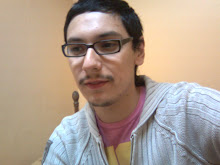Marco Ibarra
Language IX
Crystal Hickerson
25 May 2008
BAD RESULTS IN TEACHING ENGLISH
In this chapter, the author states that there are two marked tendencies in school, Teachers and Testers. The first ones are centered on students’ learning process; the second ones are more focused on testing students, and both have different points of view that could be considered dangerous, when any of them thinks that can do the best without the other one. This is directly connected with the idea of getting bad results in when teaching English, for the reason that some teachers tend to believe that what they do is the best, and what other teachers do is wrong or does not work in class.
The way Johnson explains the topic, is basically organized and schematic, he takes an idea, such as ‘The psychometric approach’ and explains it clearly step by step and with useful examples, which helps to comprehend much better the chapter. Keith argues that instead of having these differences between Teachers and Testers, they can have integrative testing, in order to group these. Another characteristic that we can find, is a communicative test in which we get information from the for basic skills, and we have the necessary information to come up with results to be used in further tests, because with the results, we are going to have the evidence that will support further learning process, avoiding results that can be interpreted as bad results through the learning process and the assessment.
Apart from that, the author let us know that there are some easier ways of testing the four skills: receptive (reading and listening) through note taking, information transfer, matching, and passage assembly; speaking, oral interview, role play and simulation, imitation; writing, picture stimulus (from a picture, the teacher has to suggest students to write something about it, maybe a letter of complain, if it’s about buying an mp3 player). Not until we read the whole chapter, we realize that the author sometimes is lacking of deeper examples, due to they tend to be superficial, and they do not get the idea of making ideas much clearer.
Therefore, it is suggested to have in consideration more detailed examples, that truly help readers to put in practice what they are reading, not just getting information from the text in a lecturing way with not-well developed examples. Finally, the idea of keeping together Teachers and Testers is accomplished, the author makes us think of a complete process, in order to facilitate the students’ learning process, for the reason that they together make a positive impact on education, and provide more tools for teachers throughout their performance in the classroom.
Reference:
Johnson, Keith. An Introduction to Foreign Language Learning and Teaching, chapter 15. Harlow, England: Longman 2001.
Analytic Essay Correction
Publicado por Marco Ibarra en 12:59 2 comentarios
Book Review
Bibliography
Rose, Mike; Kiniry, Malcolm. Critical Strategies for Academic Thinking and Writing. Boston: Bedford, 1998.
In academic thinking and writing, we can find information and detail explanations to develop further strategies to increase students’ skills. Rose & Kiniry try to help students in college that present a lack of critical strategies when they have to do papers, research or essays.
The authors state that students don’t know to differentiate whether a text is suitable or not to write an essay, and when they choose the book, the book is not appropriate for the essay. For that reason, in the text appears an introductory discussion with examples that make easier to comprehend the mistakes students make, followed by an explanation (examples included) that help to realize and point out the main ideas of how a good paper, essay or research have to be done. It can also be found, some suggestions to develop and increase the critical strategies.
Nevertheless, the book after introducing the main ideas, changes into a group of papers that are hard to follow and tiring, which is not attractive for young readers. This kind of help, we can take it to the school life, for the reason that students in High School do not think and write critically, their works are mostly vague, lacking of deep opinions and thoughts. They just follow weak structures to develop papers.
Publicado por Marco Ibarra en 19:12 1 comentarios
